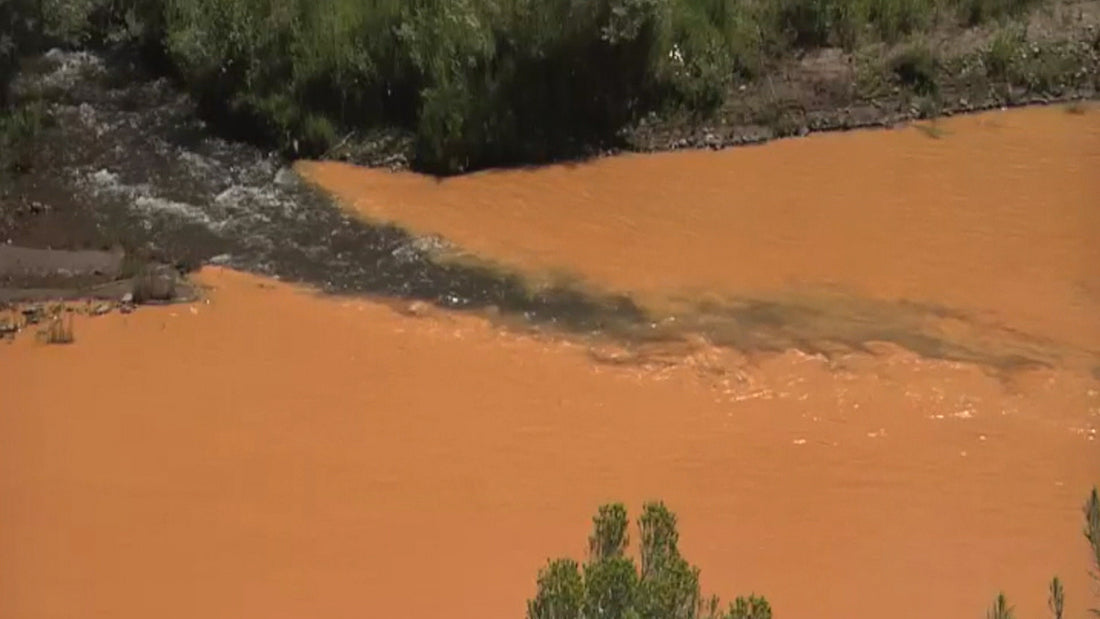How Polluted Is Colorado River?
The Colorado River is a 1,450-foot-long river that runs from Colorado to the sea, passing across Utah, Ariz, Vegas, California, etc., to Mexico. The Colorado River, which drains 242,000 square miles of territory in the southwestern United States, is without a doubt the most important river in the region.
The Colorado River is one of the country's most well-known and largest rivers. However, research revealed that the Colorado River is also one of the most populated rivers. The river has become a great metaphor for what happens whenever we place excessive demands on a finite resource: it vanishes. In fact, the Colorado river hardly reaches the sea on a regular basis.
Researchers have discovered that the Colorado River's flow is dropping as a result of global warming, putting billions of people that rely on one of America's greatest renowned streams at risk of "serious water shortages."
Droughts and increasing temperatures severely reduced the flow of the Colorado River in past years. However, scientists have already devised a model to help understand how well the climate crisis is affecting the 1,450-mile waterway.
The lack of snow throughout the Colorado River basin as a result of human-caused global warming has caused the river to capture more from the sun's energy, boosting the quantity of water lost to evaporate, according to experts from the US Geological Survey.
In this article, we'll go over all you need to know about how polluted the Colorado River is, as well as some additional information about it. Continue reading for more information.
What Exactly Is River/Water Pollution?
Groundwater is a type of river pollution that is formed whenever rain falls and penetrates deep into the soil, filling the gaps, cracks, and porous areas of an aquifer, essentially underground storage of water. Almost 45% of Americans get their drinking water from groundwater that is pumped towards the earth's surface. It is the only source of drinking water for some people in remote regions.
When pollutants such as fertilisers and pesticides, as well as trash drained from wastes and septic systems, find their way into an aquifer, they make it hazardous for human consumption. Contaminant removal from groundwater can be difficult and also expensive. An aquifer that has been contaminated may be useless for decades, if not millions of years. As it penetrates into rivers, lakes, and seas, groundwater may spread contaminants far from the initial contaminating source.
The Albedo Effect Causing Pollution In Colorado River
The Colorado river pollution is due to the Albedo Effect, which occurs when ice and snow reflect sunlight move away from the Earth's surface. As per a study published in The Scientific Journal, the loss of albedo when snow and ice melt reduces the flow of the Colorado river by 9.4% for every 1 degree Celsius of warming.
Since before the post period, the globe has warmed by approximately 1°C and is on track to warm by more than 3°C by the middle of the century if global warming emissions are significantly reduced. According to the research, this scenario will result in an “increasing danger of catastrophic water shortages” for Colorado, with any rise in rainfall unlikely to compensate for the loss of reflecting snow.
As per Brad Udall, a senior researcher at Colorado State University as well as an expert of water resources in the west who has not been involved in the research, the extent of Colorado's decrease as detailed in the Science publication is "jaw-dropping."
“This has significant consequences for both water consumers and managers,” added Udall. “More generally, our findings indicate that we must cut greenhouse emissions as quickly as possible.”
How Much Water Does The Upper Basin of The Colorado River Provides
The upper basin of the Colorado River provides water to roughly 40 million people and generates 16 million jobs. This feeds the country's two largest water reservoirs, Lake Powell and Lake Mead, the latter of which supplies virtually all Las Vegas' water.
Snowpacks that linger until late spring have traditionally fed streams that feed the Colorado River while also lowering the risk of catastrophic fires. The river is draining as the temperature warms, increasing the danger of devastating wildfires.
Existing risks to the river, such as excessive water pumping for farming, water usage by urban areas, as well as the possibility of contamination from uranium mines, are being exacerbated by the climate crisis. The water level in Lake Mead, the massive reservoir created by the Hoover dam, has plummeted to levels not seen since the 70s.
The year before, the US government almost imposed obligatory limits in river water consumption due to a 19-year drought that ravaged parts of the river, just for seven western states to ratify to voluntary reduction. Yet, as the climate grows warmer and drier at a time that demand for water from growing towns in the American west rises, the difficulties are expected to worsen.
What Is The Biggest Threat To The Colorado River?
According to the American Rivers Association and its allies, raw sewage, radiation, as well as hazardous waste represent the biggest threat to the Colorado River, which provides water to even more than 25 million citizens in Nevada, Arizona and California.
A study, which was issued in 2020, identifies the ten rivers that are most likely to face environmental risks in the upcoming year.
According to the research, the Colorado River, which runs across the western United States, contains human waste through septic systems, jet fuel booster chloride flowing towards Lake Mead, and even radioactive groundwater sponging into the river in Utah.
"The Colorado River is also not currently the most contaminated river in the country," stated Rebecca Wodder, director of American Rivers. "However, if the existing problems are left to thrive, it may become so," she said.
"Problems that extend well beyond the river's banks require a deliberate national response."
The water of this river is safe, according to authorities, and the pollutants are below federal and state requirements.






